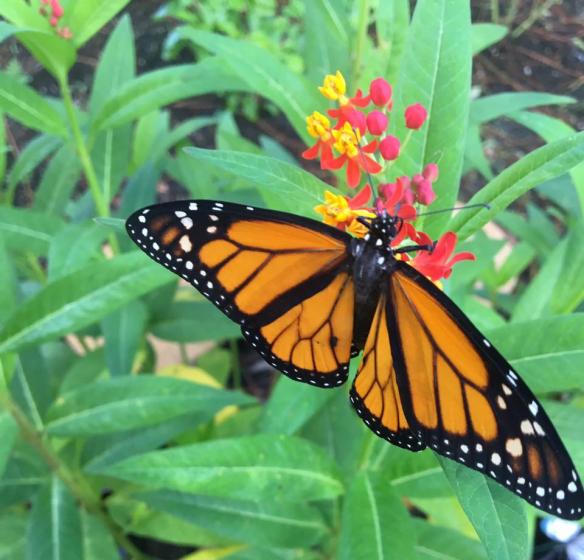The monarch butterfly has long been an ambassador of nature in the garden and a symbol of summertime. Generations of schoolchildren have raised monarchs in classrooms, watching in awe as caterpillars transform into beautiful orange-and-black adult butterflies. Yet monarch butterflies, once a familiar sight, are plummeting toward extinction (by 90 percent in the last 20 years). One of the main reasons for their decline is a lack of milkweed, the species’ only caterpillar host plant. Without milkweed, monarchs are unable to complete their lifecycle. By planting milkweed in your garden or neighborhood, you provide an essential habitat that will allow caterpillars to survive. A garden that's good for butterflies is also good for other pollinators such as bees and hummingbirds who often share the same nectar plants and utilize the same habitat. And, butterfly gardens are a great way to bring life and color into your yard. Here are some recommendations on perennial and annual milkweeds for Hampton Roads' gardeners:
ANNUAL MILKWEED:
Tropical Milkweed (Asclepia Curassavica) – this annual milkweed features showy red and yellow flowers and is preferred by egg-laying female monarchs to the other milkweeds when given a choice. Grows fast and easy from seed and flowers all summer long. Matures to approximately 2-3 feet tall and prefers full sun to partial shade. Plant in the garden or in containers.
PERNNIAL MILKWEEDS:
Common Milkweed (Asclepias Syriac) - is the plant most people think of when they hear the word “milkweed.” This variety produces a profusion of fragrant, lavender to pink flowers in midsummer with nice, plump leaves that will feed plenty of caterpillars. Blooms from late spring well into summer. Common milkweed spreads by runners making it ideal planted in naturalized areas. Typically grows to 2-4 feet tall and thrives in almost any well-drained soil spot.
Butterfly Weed (Asclepias Tuberosa) - the 2017 Perennial Plant of the Year, this milkweed is easy to grow and is the only perennial milkweed that produces vivid, orange flower clusters. Butterfly weed grows to around 18-24 inches tall and wide, making it a perfect fit for small space gardens. This blooming beauty also makes a nice cut flower. Prefers full sun.
Swamp Milkweed (Asclepia Incarnata) - a taller, clump-forming milkweed that comes in fragrant, pink (Cinderella) or white (Ballet) flower clusters. This milkweed reaches 3-5 feet tall and prefers full sun and average to moist soil conditions but can also tolerate slightly dryer spots.
Whorled Milkweed (Asclepia Verticillata) - a shorter perennial milkweed with white flowers clusters and needle-like foliage. This variety blooms a little later in the season providing color in your garden when most flowers have disappeared. Whorled milkweed can survive in partial shade whereas other milkweed species need full sun to produce sufficient blooms. Whorled grows to approximately two feet tall making it ideal for those that have small space gardens.
TIP: Plant both annual and perennial milkweeds, so there is plenty of food for the hungry monarch caterpillars. Growing a good variety of nectar flowers also helps to sustain all beneficial insects, adds beauty to your yard, and contributes to the overall health of the local ecosystem. Some of our favorite nectar flowers include lantana, butterfly bush, coneflower and zinnias.

